Customer-Driven Smart and Sustainable Interactions in Conventions: The Case of Nestlé’s Smart Button Adoption
Abstract
:1. Introduction
2. Literature Review
2.1. Smartness and Sustainability for Smart Conventions
2.2. Customer-Driven Interaction for Smart Convention
3. Customer-Driven Smart and Sustainable Services Development and Evaluation for Conventions
3.1. Diagnosis Phase
3.2. Action Planning Phase
3.3. Action Taking Phase
3.4. Evaluation Phase
3.5. Specify Learning Phase
4. Discussion and Conclusions
Acknowledgments
Author Contributions
Conflicts of Interest
References
- Koo, C.; Yoo, K.; Lee, J.; Zanker, M. Special section on generative smart tourism systems and management: Man–machine interaction. Int. J. Inf. Manag. 2016, 6, 1301–1305. [Google Scholar] [CrossRef]
- Koo, C.; Park, J.; Lee, J. Smart Tourism: Traveler, business, and organizational perspectives. Inf. Manag. 2017, 54, 683–686. [Google Scholar] [CrossRef]
- De Avila, D. Smart destination: XXI century tourism. In Proceedings of the ENTER Conference on Information and Communication Technologies in Tourism, Lugano, Switzerland, 4–6 February 2015. [Google Scholar]
- Harrison, C.; Eckman, B.; Hamilton, R.; Hartswick, P.; Kalagnanam, J.; Paraszczak, J.; Williams, P. Foundations for smarter cities. IBM J. Res. Dev. 2010, 54, 1–16. [Google Scholar] [CrossRef]
- Buhalis, D.; Amaranggana, A. Smart tourism destinations. Inf. Commun. Technol. Tour. 2014. [Google Scholar] [CrossRef]
- Gretzel, M.; Xiang, S.Z.; Koo, C. Smart tourism: Foundations and developments. Electron. Mark. 2015, 25, 179–188. [Google Scholar] [CrossRef]
- Li, Y.; Hu, C.; Huang, C.; Duan, L. The concept of smart tourism in the context of tourism information services. Tour. Manag. 2017, 58, 293–300. [Google Scholar] [CrossRef]
- Mowforth, M.; Munt, I. Tour. Sustain. Development, Globalisation and New Tourism in the Third World; Routledge: Abingdon-on-Thames, UK, 2015. [Google Scholar]
- Gössling, S. Tourism, information technologies and sustainability: An exploratory review. J. Sustain. Tour. 2017, 25, 1024–1041. [Google Scholar] [CrossRef]
- Scott, M.M.; Frew, A.J. Exploring the role of in-trip applications for sustainable tourism: Expert perspectives. Inf. Commun. Technol. Tour. 2013, 36–46. [Google Scholar] [CrossRef]
- Lu, J.; Nepal, S.K. Sustainable tourism research: An analysis of papers published in the Journal of Sustainable Tourism. J. Sustain. Tour. 2009, 17, 5–16. [Google Scholar] [CrossRef]
- Tosun, C. Expected nature of community participation in tourism development. Tour. Manag. 2006, 27, 493–504. [Google Scholar] [CrossRef]
- Japantoday. Available online: https://japantoday.com/category/features/lifestyle/kyoto-silence-taxi-service-prohibits-drivers-from-instigating-small-talk (accessed on 23 October 2017).
- Yonhapnews. Available online: http://www.yonhapnews.co.kr/bulletin/2017/06/07/0200000000AKR20170607133300009.HTML (accessed on 23 October 2017).
- Imgur. Available online: http://imgur.com/gallery/0qexjJG (accessed on 23 October 2017).
- Benple. Available online: http://benple.com/?p=6924 (accessed on 23 October 2017).
- Park, A.; Chang, H.; Lee, K.J. Action Research on Development and Application of Internet of Things Services in Hospital. Healthc. Inf. Res. 2017, 23, 25–34. [Google Scholar] [CrossRef] [PubMed]
- Park, A.; Han, J.; Lee, K.J. IoT-based Omni Channel Service for Smart Exhibition and Value of Data. In Proceedings of the International Conference on Electronic Commerce, Pangyo, Korea, 17–18 August 2017. [Google Scholar]
- Park, A.; Lee, K.J. Service design based on IoT and technology comparison for Fine Art Gallery. In Proceedings of the International Joint Conference on e-Business and Telecommunications, Madrid, Spain, 24–26 July 2017. [Google Scholar]
- Beaconstac. Available online: https://blog.beaconstac.com/2015/07/ibeacon-vs-nfc-vs-gps-which-indoor-location-technology-will-your-business-benefit-from/ (accessed on 23 October 2017).
- Yewonc. Available online: http://kto.visitkorea.or.kr/file/download/min/2649.kto (accessed on 23 October 2017).
- Haselsteiner, E.; Breitfuß, K. Security in near field communication (NFC). In Proceedings of the Workshop on RFID Security, Gratkorn, Austria, 22 July 2006; pp. 12–14. [Google Scholar]
- Icemkorea. Available online: http://www.icemkorea.com/gmi/gmi-contents/mice-statistics/?id=10801&link=%2Fgmi%2Fgmi-contents%2Fmice-statistics%2F (accessed on 23 October 2017).
- Newman, N. Apple iBeacon technology briefing. J. Direct Data Digit. Mark. Pract. 2014, 15, 222–225. [Google Scholar] [CrossRef]
- Babüroglu, O.N.; Ravn, I. Normative action research. Organ. Stud. 1992, 13, 19–34. [Google Scholar] [CrossRef]
- Baskerville, R.L.; Wood-Harper, A.T. A critical perspective on action research as a method for information systems research. J. Inf. Technol. 1996, 11, 235–246. [Google Scholar] [CrossRef]
- Venable, J.; Pries-Heje, J.; Baskerville, R. FEDS: A Framework for Evaluation in Design Science Research. Eur. J. Inf. Syst. 2016, 25, 77–89. [Google Scholar] [CrossRef]
- Checkland, P. From framework through experience to learning: The essential nature of action research. In Information Systems Research: Contemporary Approaches & Emergent Traditions; Nissen, H.-E., Klein, H.K., Hirschheim, R.A., Eds.; Elsevier North-Holland, Inc.: Amsterdam, The Netherlands, 1991; pp. 397–403. [Google Scholar]
- Sommer, B.; Sommer, R. A Practical Guide to Behavioral Research: Tools and Techniques; Oxford University Press: New York, NY, USA, 2001. [Google Scholar]
- Sommer, R. Serving Two Masters: Center for Consumer Research at the University of California, Davis, 1976–1992. J. Consum. Aff. 1994. [Google Scholar] [CrossRef]
- Choi, M.H.; Jungho, J.; Heegoo, K.; Kyoung Jun, L. An application case of utility tag-based convention service system: Cosmetics and Beauty Expo, Osong Korea 2013. Inf. Syst. Rev. 2013, 15, 111–128. [Google Scholar]
- Choi, M.H.; Jungo, J.; Kang, H.; Lee, K.J. A Case of NFC-based Exhibition Support System for Analyzing Visitor’s POB (Point of Behaviors). Inf. Syst. Rev. 2013, 15, 111–127. [Google Scholar]
- Jun, J.H.; Choi, M.H.; Lee, K.J. The Development and Operation of NFC-based Exhibition Support Service: A Motor Show Case. J. Korea Soc. IT Serv. 2014, 13, 83–97. [Google Scholar] [CrossRef]
- Han, H.; Park, A.; Chung, N.; Lee, K.J. A near field communication adoption and its impact on Expo visitors’ behavior. Int. J. Inf. Manag. 2016, 36, 1328–1339. [Google Scholar] [CrossRef]
- Lee, K.J.; Jun, J.H. SPB (Seamlessness-Privacy-Benefit) Paradigm for Construction of Highly-Connected Information Society. J. Korea Soc. IT Serv. 2012, 11, 131–146. [Google Scholar] [CrossRef]
- Benple. Available online: http://benple.com/?p=7318 (accessed on 23 October 2017).
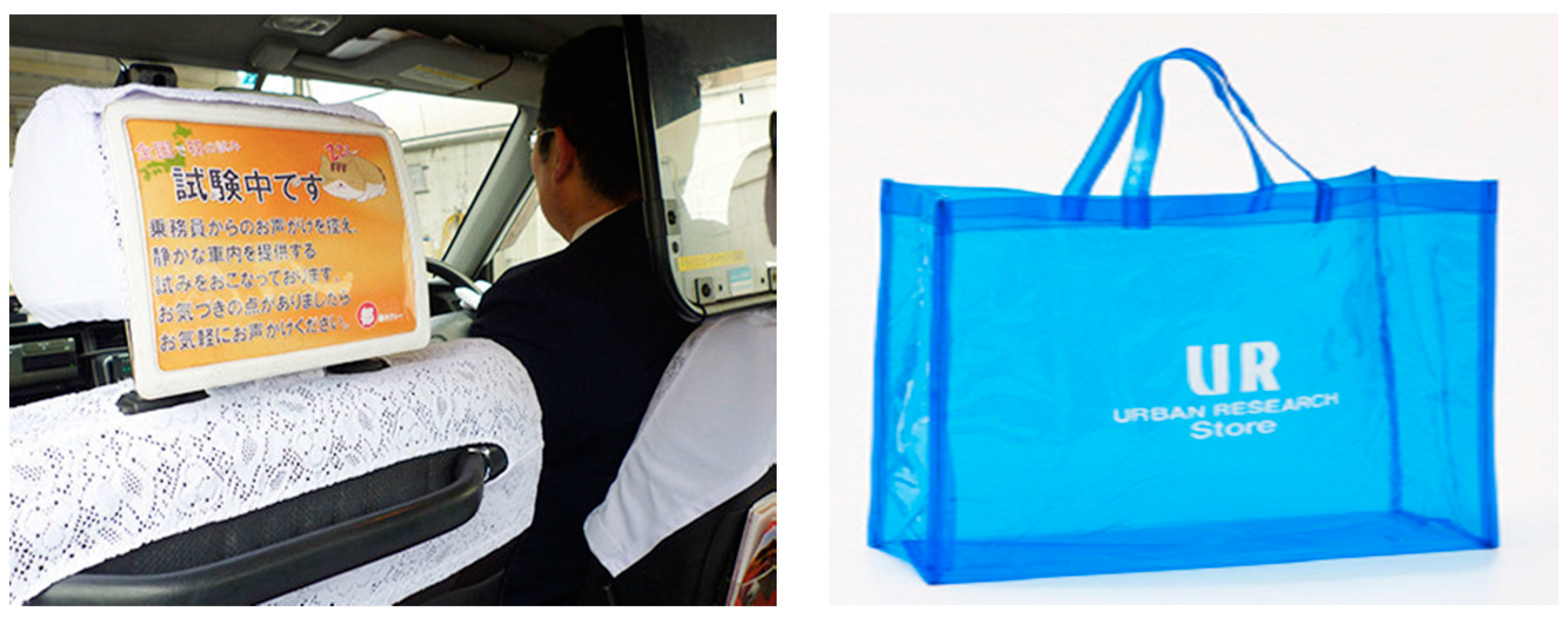
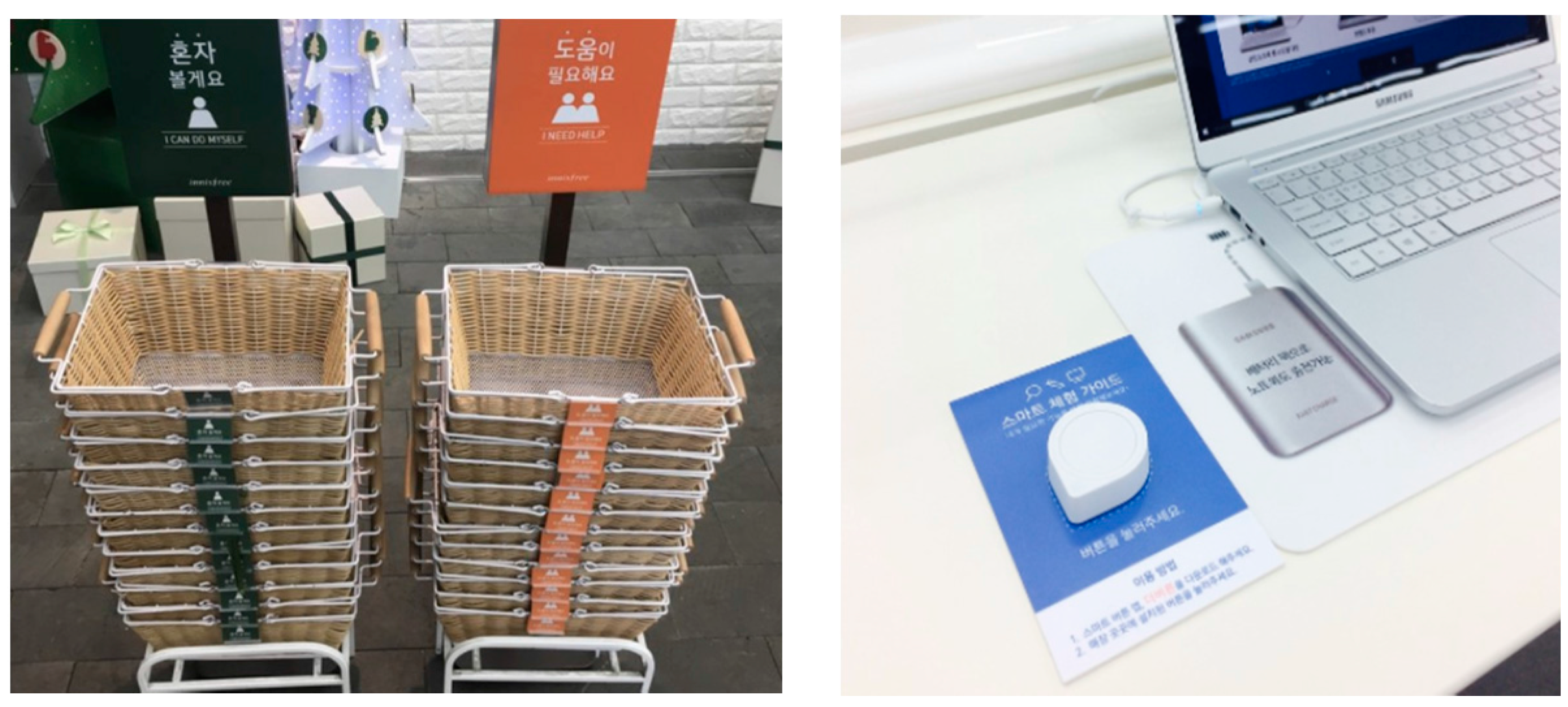
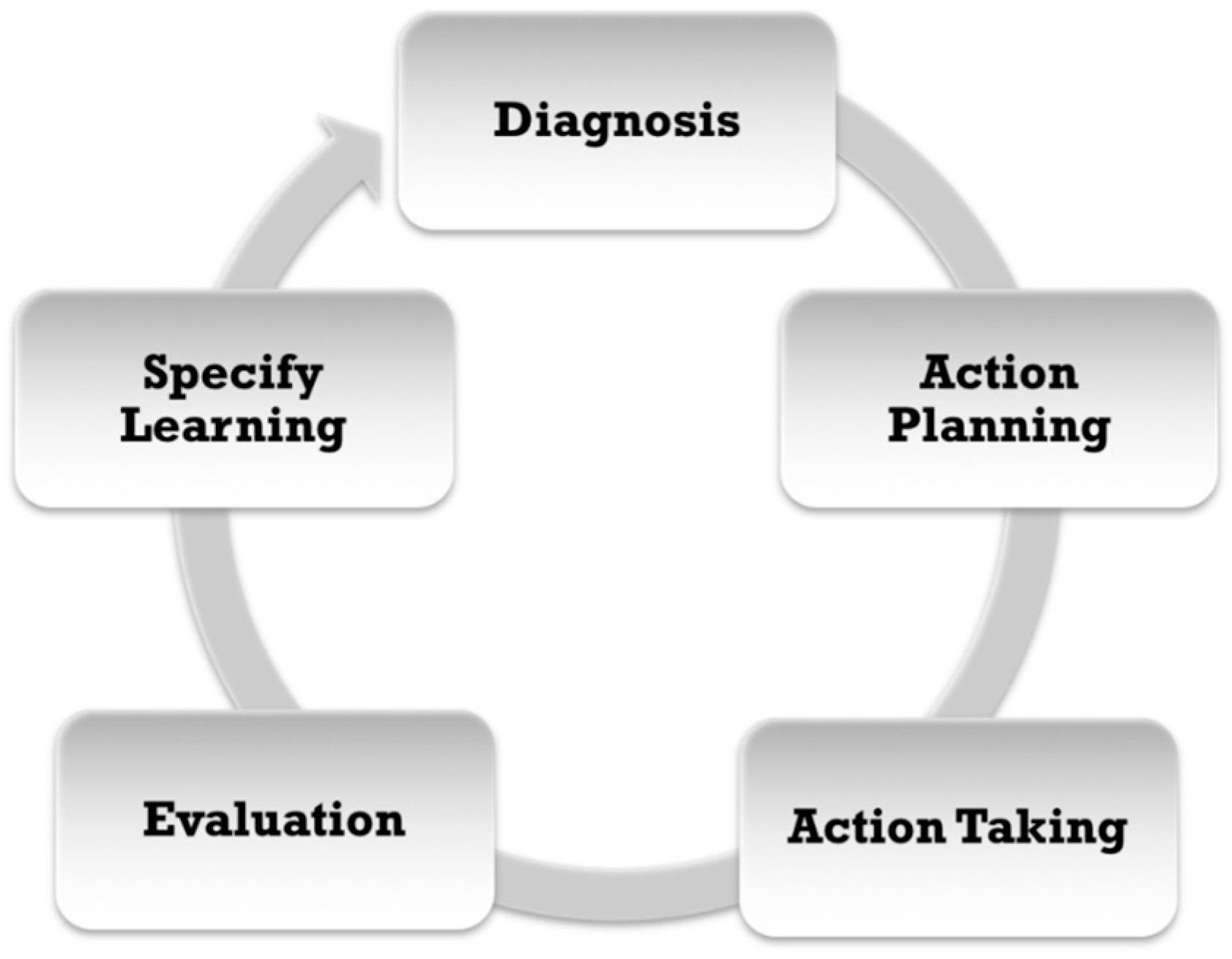
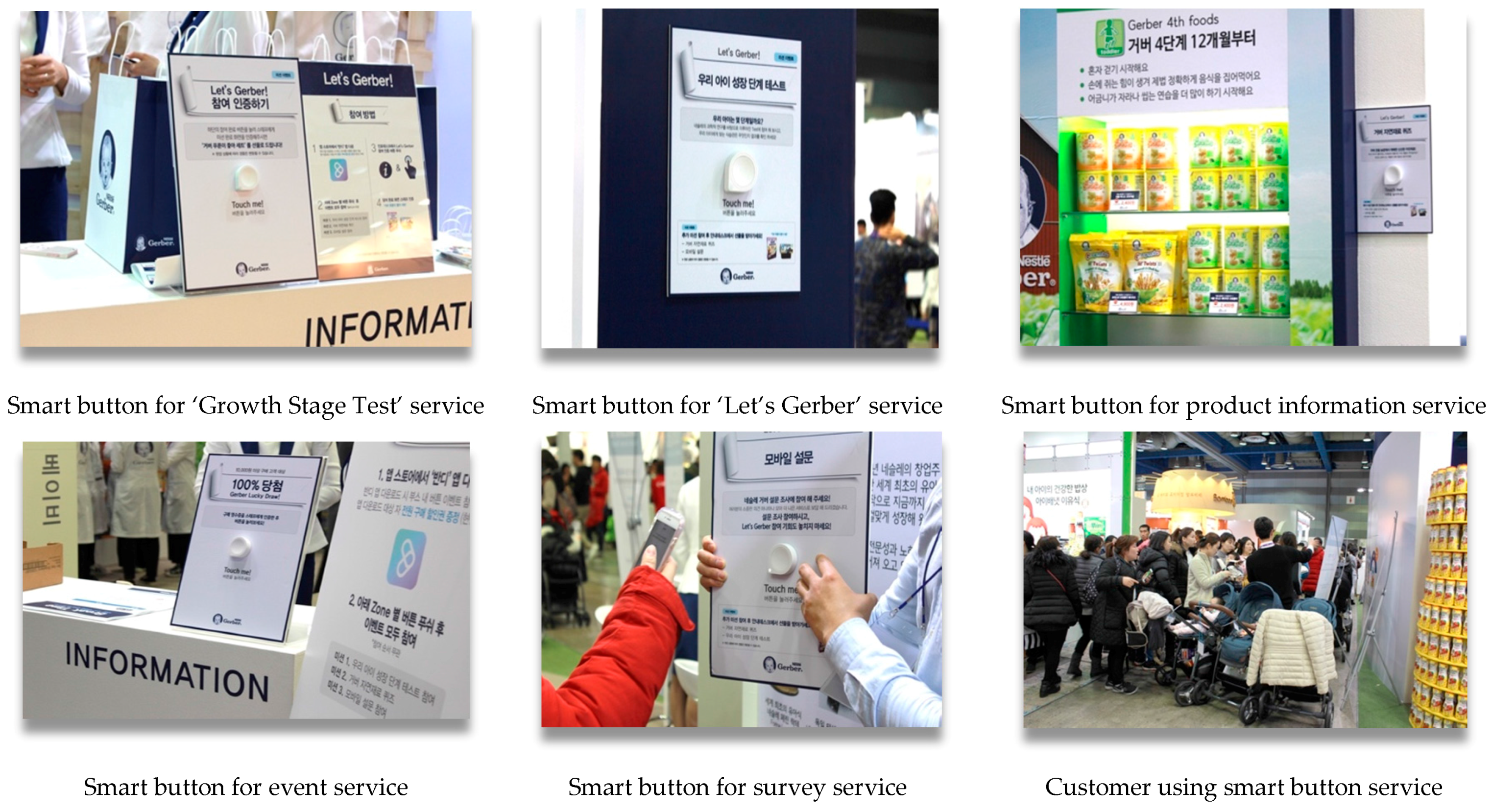
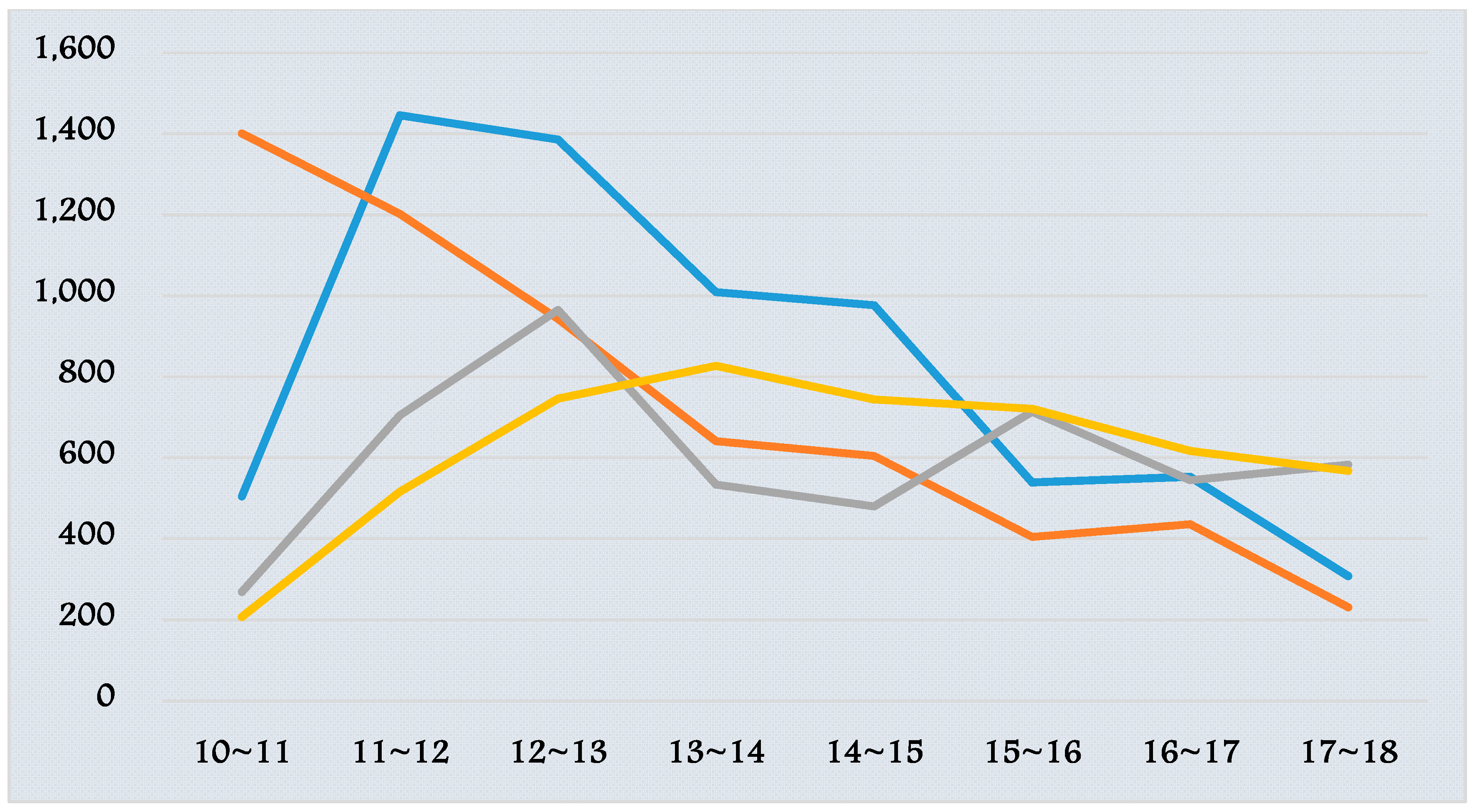
| Authors | Notion |
|---|---|
| Li et al. (2017) [7] | Emphasizing the ease with which users can automatically obtain suitable and precise services (being “smart” enables the perception of users’ needs and provision of accurate service information) by data accumulation with technological means (devices). |
| Koo et al. (2017) [2] | Meaning not only fast, convenient, cheap, and intelligent for a traveler, but also efficient, effective, productive, and creative for businesses in terms of providing and consuming tourism products and services through a network of cooperating businesses. These businesses can collaborate in an interoperable manner to seamlessly exchange data and information in order to achieve mutual goals with other companies or institutions through business processes. |
| Gretzel et al. (2015) [6] | Describing technological, economic, and social developments fueled by technologies that rely on sensors, big data, open data, new ways of connectivity, and exchange of information (e.g., IoT, RFID (Radio Frequency Identificatoin), and NFC (Near Field Communicaion)) as well as the abilities to infer and reason. |
| Buhalis and Amaranggana (2013) [5] | Addressing travelers’ needs before, during, and after their trip, destinations could increase their competitiveness level by embedding technology in all organizations and entities. |
| Harrison et al. (2010) [4] | Exploiting operational, near-real-time real-world data, and integrating and sharing data; and using complex analytics, modelling, optimization, and visualization to make better operational decisions. |
| Authors | Notion |
|---|---|
| Gössling (2017) [9] | Focusing attention on a set of ethical values and principles, which guide actions in a responsible and harmonious manner, incorporating the environment and societal consequences of actions, as well as economic goals. It is concerned with a balanced and holistic approach that recognizes the role of all stakeholders and both present and future generations’ entitlement to the use of resources. |
| Scott and Frew (2013) [10] | A very critical factor in the design of e-tourism applications owing to the linkages to location-based services, destination management systems, carbon calculators, virtual reality technologies, wireless technologies, intelligent transportation systems, social media, augmented reality, and recommender systems. |
| Lu and Nepal (2009) [11] | Not focused on developing a specific type of tourism product or reducing environmental impacts, rather it had advanced to become an overarching paradigm or goal that could be applied in a range of contexts. |
| Tosun (2006) [12] | When the community fully participates in tourism activities there is sustainability, better opportunities for local people to gain benefits from tourism taking place in their locality, positive local attitudes, and the conservation of local resources. |
| QR Code | NFC Tag | BLE Beacon | BLE Button | |
|---|---|---|---|---|
| Price | Free | $0.1~0.6 | Under $30 | Under $30 |
| Battery Life | No need | No need | one year | A couple of years |
| Range | ~4 m | 10 cm or less | 1~70 m | Within arm’s reach (e.g., 1 m) |
| Accuracy | Not accurate (does not work in the dark) | accurate | Not very accurate (interference by water, air, human bodies or even metallic surfaces) | accurate |
| Ease of Use | Customers are accustomed to scanning a QR code | Scanning a tag is a new way of use to be learned | Pushed message is sometimes inconvenient | Pushing a button is easy. |
| User availability | Both Android phone and iPhone users | Android phone and iPhone 8( iOS 11) users | Both Android phone and iPhone users | Both Android phone and iPhone users |
| Service | Problems and Needs |
|---|---|
| Information service | Kiosks are big, heavy, expensive, and not efficiently used. Providing information in the form of paper generates garbage and is also troublesome for visitors to carry with them.
|
Providing pamphlets to inform visitors about companies and products, or booth locations.
| |
| Obtaining visitor’s information | Waste of time and manpower to re-digitize after implementing a survey with paper.
|
| Obtaining product-related preferences from visitors | Waste of time and manpower to re-digitize after a survey using paper.
|
| Promotion service | Inefficient lucky draw (visitors must remain until the specified time)
|
| Service Model | Scenario |
|---|---|
| 1. Info Desk | Provide a map which has information on all the booths when a visitor pressed the button at the “Info Desk”. After confirming the booth map, visitors downloaded a 10% discount coupon. |
| 2. 1000 Day Zone | Pressing the “1000 Day Zone” button, visitors received questions on the growth stage (e.g., age) of their child. Once a visitor gave the answers, the company provided a Gerber product and child care tips according to the child’s growth stage. |
| 3. Gerber DP Zone | When a visitor pressed the button on the “Gerber DP Zone”, a page was displayed and the visitor could select the ingredients and answer a quiz in order to receive Gerber products. |
| 4. Mobile Survey | When a visitor pressed the “Gerber Kitchen” button (then moved to the BEBA zone), the Baby Fair-related questionnaire page was shown. |
| 5. Lucky Draw | If a visitor bought more than $10,000 worth of products/services, they would receive a prize by selecting one of the three cards when they pressed the button. |
| 6. Mobile Website | A visitor could press the button for the BEBA zone (Nestlé’s product name) to access BEBA’s information page. |
| 1. Info Desk | 2. 1000 Day Zone | 3. Gerber DP Zone |
 |  |  |
| 4. Mobile Survey | 5. Lucky Draw | 6. Mobile Web |
 |  |  |
| Services | 16 February 2017 | 17 February 2017 | 18 February 2017 | 19 February 2017 | Total |
|---|---|---|---|---|---|
| Info Desk * | 944 | - | - | - | 944 |
| 1000 Day Zone | 1434 | 1384 | 1446 | 1509 | 5773 |
| Gerber DP Zone | 1589 | 1411 | 1274 | 1319 | 5593 |
| Mobile Survey | 1409 | 1515 | 1451 | 1461 | 5836 |
| Lucky Draw | 446 | 306 | 427 | 516 | 1695 |
| Mobile Web * | 114 | - | - | - | 114 |
| Total | 5936 | 4616 | 4598 | 4805 | 19,955 |
© 2017 by the authors. Licensee MDPI, Basel, Switzerland. This article is an open access article distributed under the terms and conditions of the Creative Commons Attribution (CC BY) license (http://creativecommons.org/licenses/by/4.0/).
Share and Cite
Park, A.; Jun, J.; Lee, K.J. Customer-Driven Smart and Sustainable Interactions in Conventions: The Case of Nestlé’s Smart Button Adoption. Sustainability 2017, 9, 2007. https://doi.org/10.3390/su9112007
Park A, Jun J, Lee KJ. Customer-Driven Smart and Sustainable Interactions in Conventions: The Case of Nestlé’s Smart Button Adoption. Sustainability. 2017; 9(11):2007. https://doi.org/10.3390/su9112007
Chicago/Turabian StylePark, Arum, Jungho Jun, and Kyoung Jun Lee. 2017. "Customer-Driven Smart and Sustainable Interactions in Conventions: The Case of Nestlé’s Smart Button Adoption" Sustainability 9, no. 11: 2007. https://doi.org/10.3390/su9112007




